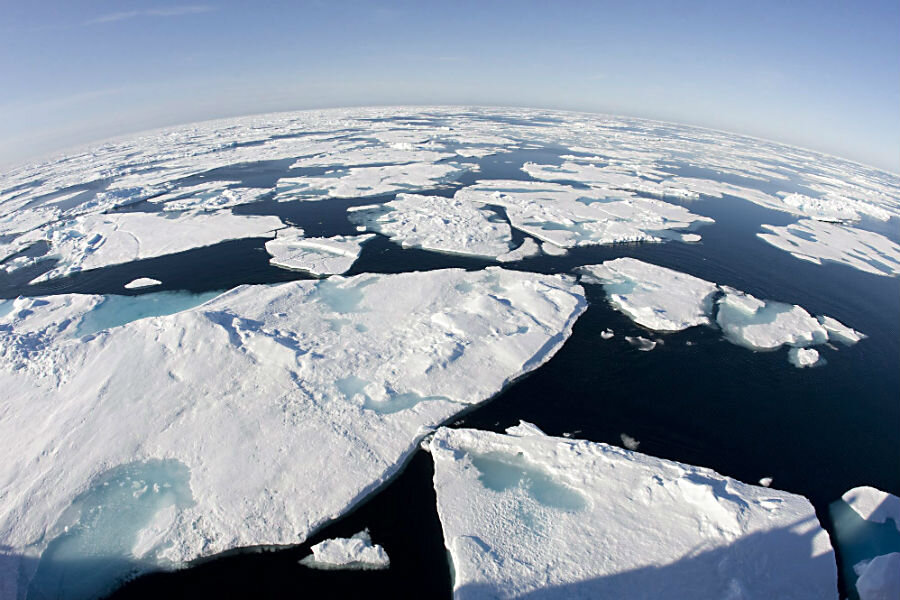As Arctic sea ice melts, Antarctic sea ice grows. How does that happen?
Loading...
Researchers supported by the National Aeronautics and Space Administration (NASA) and the National Oceanic and Atmospheric Administration (NOAA) may have found an explanation for the differences in coverage between Arctic and Antarctic ice sheets.
A new study by a NASA- and NOAA-backed team identifies the causes of the "stark contrast between Arctic and Antarctic sea ice change." The northern pole’s sea ice extent has been recorded at all-time lows in recent years and thinned by 65 percent between 1975 and 2012, while the icy southern continent has seen gains in its ice coverage despite concerns over glacier melting.
Using temperature, topographical, and bathymetric data, the research team identified the cause behind the preservation of Antarctica’s ice. They found local ocean depth and continental surface features impact the region's wind and ocean currents such that the production and protection of sea ice is sustained, while also noting that dissimilar conditions in the Arctic led to the ongoing melt in the north.
"Our study provides strong evidence that the behavior of Antarctic sea ice is entirely consistent with the geophysical characteristics found in the southern polar region, which differ sharply from those present in the Arctic," Jet Propulsion Laboratory Earth science researcher Son Nghiem said in a news release.
Using data from NASA's QuikScat satellite, launched in 1999, the scientists analyzed the formation and routes of Antarctic sea ice, as well as the different types of ice coverage in the Southern Ocean. The conclusion: Winds push building ice out and around the continent during the sea ice growth season of June to September, forming a 'Great Shield' zone (GSZ) that shelters young interior ice.
The established GSZ stretches from 60 to 620 miles wide and keeps the new ice from being broken up by the elements. The zone's path also corresponds with the the southern Antarctic Circumpolar Current front, a boundary that marks a separation of cooler and warmer waters near the southern continent. Keeping in line with colder waters maintains the GSZ and allows for new ice to grow quickly in "ice factories" left in open water.
The southern GSZ provides conditions nearly opposite to those of the Arctic's marginal ice zone (MIZ), a boundary of thin, new ice easily disturbed by wind and waves and subjected to warmer waters than the GSZ, resulting in regional "feeble ice conditions." Arctic wind patterns can also move developing ice toward warmer sections of the ocean, where it melts.
Even with evidence and an explanation for sea ice growth in Antarctica, record high global temperatures and the ongoing melting of major glaciers has some scientists worried about the future of arctic ice features and their impact on sea level rise. Antarctic glaciers may be "at risk of substantial ice loss," and could contribute to "a multi-meter response to climate change" near the continent, as University of Western Australia researcher Alan Aitken told The Christian Science Monitor this past week.
While the NASA/NOAA study yielded a more definite conclusion on the differences in the two regions' sea ice, the scientists noted that further research into the protective ice zones could provide improved models of polar ice production, help predict whether Arctic and Antarctic ice will grow or shrink in the future, and provide insight into the potential contributions to sea level rise the Arctic’s melts could have.







